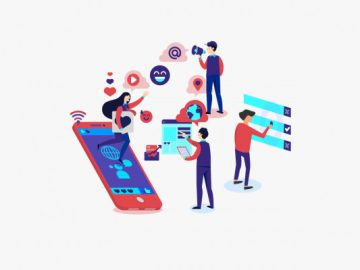Non-fungible tokens have changed how artists and musicians and writers have been able to make money from their creations. It is different from traditional digital content since NFTs are singular assets residing on the blockchain, especially Ethereum. This makes them different from other easily copied digital files since NFTs refer to real ownership.
The Rise of NFTs in Digital Art and Media
For creators, NFTs bring three main benefits: Ownership, authenticity and royalties are two of the more common legal issues that are important to the parties involved. Selling a work means that the owner has the discretion over the work even after passing it on to a buyer. There is a guarantee of the authenticity of the content through the use of block chain which also offers a proof of origin. Also, creators get royalties agreed in smart contracts each time on resale, creating a steady source of income from the artwork.
Why Artists Are Choosing NFT Platforms
Independent performers, such as digital artists, musicians, and writers are using nft marketplace for creators because these are more flexible when it comes to pricing and the ability to reach an international market. In the past, creators did not have much say in how they wished their digital content to be propagated. In this way, creators can set their own price and expand their markets, which eliminates barriers.
Another feature that most people find endearing is the prospect of getting royalties when reselling. This kind of income is continuous, which makes artists to be relieved from the one-time selling of their products. As with most digital assets, creators continue to earn a percentage of the profit every time an NFT is resold in the market, making it financially sustainable.
Major Milestones in the Market
There are significant events that have defined and taken the NFT market to the level where it has brought creators into focus. For instance, Beeple’s “Everydays: The First 5000 Days” for $69 million showed that it is possible for NFTs to become a huge money maker.
Musicians and influencers have also benefited as other creators in the industry. Tokenization has see artists like Kings of Leon and musicians like Grimes earning millions of dollars. Such early wins have proved that NFTs are a useful instrument for creators and have created possibilities for accessibility.
Challenges and Future Opportunities for NFT Creators
Overcoming Barriers to Entry for New Creators
The first obstacle that creators just entering the market face is the cost of a product’s creation. Gas fees which are fees paid to the Ethereum network for every transaction can be expensive. However, the platforms are coming up with measures on how to minimize these costs. It can also be overwhelming to learn about NFTs but there are now guides for those who want to create, mint, and sell it.
New platforms are appearing with more convenient tools to work with, so getting into the NFT sector does not require a great deal of experience or knowledge about coding.
Building a Sustainable Career
To be successful in the long run, creators should approach NFTs as one of the tactics. Investing in NFTs as an art form can also be a great way, however, the combination of sales with other revenue streams like commissions or merchandise can form a great career. This is especially so if the business is in a competitive industry with many other businesses offering similar services. Building direct relationships with collectors and fans is beneficial because it fosters and sustains the collector and fan base for the creator.
The Future of NFTs and What Creators Should Watch For
It is generally promising to look at the future, but it is also necessary to take into account tendencies like the appearance of the metaverse and the cooperation of distinct sorts of media. With the increasing expansion of the metaverse and other virtual environments, more and more sales will be possible for artists and other content creators.
Further, the regulation factor may come into the picture concerning the future of the market. Therefore, creators of such products should monitor the developments in the cryptocurrency and the NFT market since governments and financial institutions are likely to scrutinize the two.
Conclusion
Non-fungible token marketplaces are revolutionizing the creative industry through providing artists, musicians, and writers with better ways of owning, marketing, and monetizing their digital content. Artists have more options available to them to become successful. The NFT marketplace for creators is still developing to provide more chances to those who are ready to navigate the new world of digital assets. The opportunities are limitless and creators should wake up from the slumber and embrace the new future.


